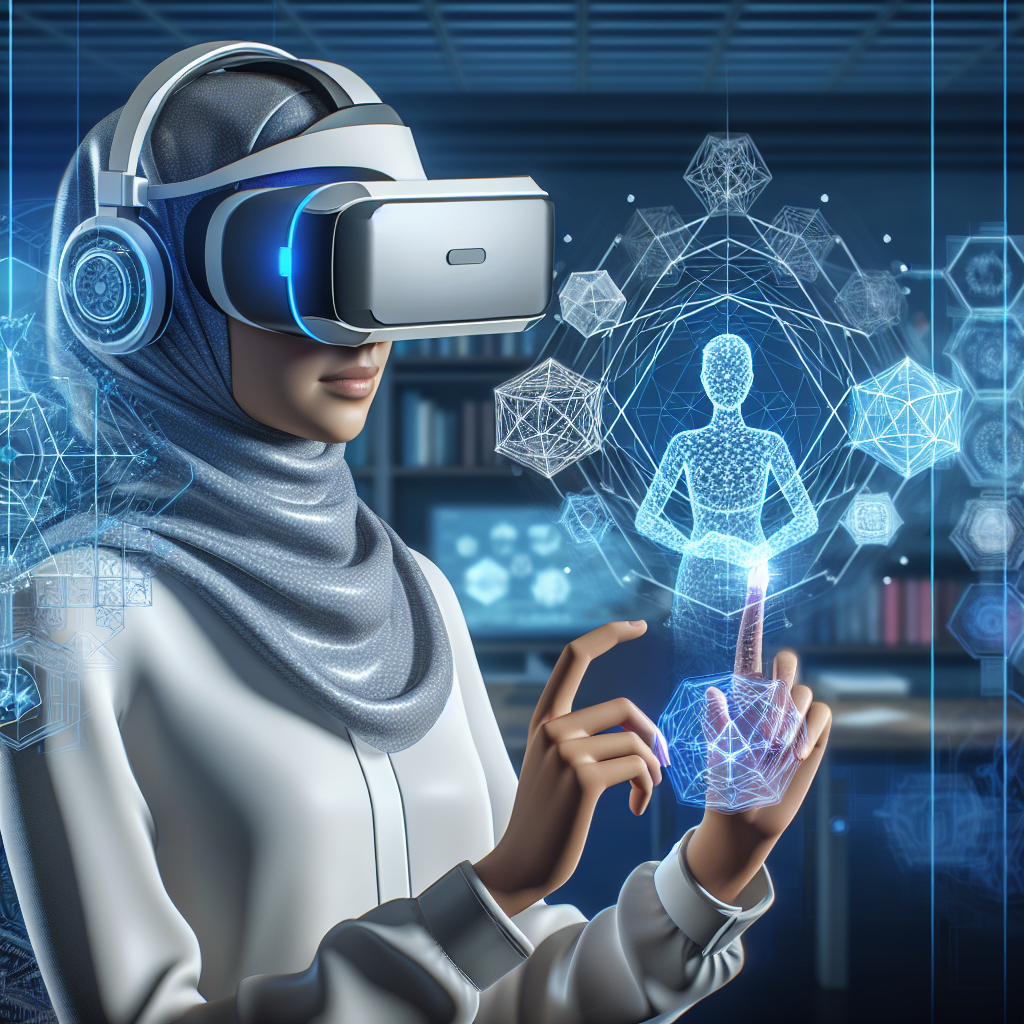Artificial Intelligence (AI) and Virtual Reality (VR) are two of the most cutting-edge technologies of our time. When combined, they have the potential to create truly immersive and interactive experiences that were once only seen in science fiction movies. In this article, we will explore how AI is being used to enhance VR experiences and the impact it is having on industries such as gaming, healthcare, education, and more.
AI in Virtual Reality
AI is a technology that enables machines to learn, reason, and make decisions like humans. When integrated into VR systems, AI can enhance the overall experience by making it more realistic, interactive, and personalized. Here are some of the ways in which AI is being used in VR:
1. Personalization: AI algorithms can analyze user data such as preferences, behavior, and interactions to create personalized experiences in VR. For example, AI can recommend content, adjust difficulty levels in games, or even create custom avatars based on the user’s facial features.
2. Realistic environments: AI can generate realistic environments in VR by using techniques such as procedural generation, ray tracing, and neural networks. This allows for more immersive experiences with lifelike graphics, lighting, and physics.
3. Natural interactions: AI-powered virtual assistants can enable natural interactions with virtual objects and characters in VR. Users can speak, gesture, or even use eye tracking to communicate with the AI, making the experience more interactive and engaging.
4. Adaptive gameplay: AI can dynamically adjust gameplay in VR based on the user’s performance, preferences, and skill level. This ensures that the experience remains challenging and engaging without becoming too difficult or too easy.
5. Emotional intelligence: AI can analyze facial expressions, body language, and voice tones to infer the user’s emotions in VR. This information can be used to adapt the experience in real-time, such as changing the storyline, music, or lighting to match the user’s mood.
6. Predictive analytics: AI algorithms can analyze user data to predict future behaviors, preferences, and trends in VR. This can help developers optimize content, marketing strategies, and user experiences to better meet the needs and expectations of their audience.
Impact of AI in VR
The integration of AI in VR is having a profound impact on various industries and sectors. Here are some of the ways in which AI is enhancing immersive experiences in VR:
1. Gaming: AI-powered NPCs (non-playable characters) can provide more realistic and challenging opponents in VR games. They can adapt to the player’s strategies, learn from their mistakes, and even collaborate with other NPCs to create dynamic and unpredictable gameplay experiences.
2. Healthcare: AI-powered VR simulations are being used for medical training, therapy, and rehabilitation. For example, surgeons can practice complex procedures in a virtual environment, therapists can treat patients with phobias or PTSD, and patients can undergo virtual reality exposure therapy for anxiety disorders.
3. Education: AI can create personalized learning experiences in VR by adapting content, difficulty levels, and feedback to the individual needs of students. This can help improve engagement, retention, and knowledge acquisition in educational settings.
4. Marketing: AI algorithms can analyze user interactions in VR to provide targeted recommendations, product placements, and advertisements. This can help brands deliver more relevant and personalized marketing campaigns to their target audience.
5. Design: AI-powered tools can assist architects, engineers, and designers in creating virtual prototypes, simulations, and visualizations. This can accelerate the design process, reduce errors, and improve collaboration among team members.
6. Entertainment: AI can enhance storytelling, character interactions, and world-building in VR experiences. This can create more engaging and immersive narratives that captivate audiences and keep them coming back for more.
FAQs
Q: How does AI improve the realism of virtual environments in VR?
A: AI can generate realistic environments in VR by using techniques such as procedural generation, ray tracing, and neural networks. These algorithms simulate natural phenomena, lighting effects, and physical interactions to create lifelike graphics, textures, and animations.
Q: Can AI-powered NPCs adapt to the player’s strategies in VR games?
A: Yes, AI-powered NPCs can adapt to the player’s strategies, learn from their mistakes, and even collaborate with other NPCs to create dynamic and unpredictable gameplay experiences in VR games.
Q: How does AI analyze user emotions in VR?
A: AI algorithms can analyze facial expressions, body language, and voice tones to infer the user’s emotions in VR. This information can be used to adapt the experience in real-time, such as changing the storyline, music, or lighting to match the user’s mood.
Q: How can AI personalize learning experiences in VR education?
A: AI can create personalized learning experiences in VR by adapting content, difficulty levels, and feedback to the individual needs of students. This can help improve engagement, retention, and knowledge acquisition in educational settings.
Q: What are some examples of AI-powered VR applications in healthcare?
A: AI-powered VR simulations are being used for medical training, therapy, and rehabilitation. For example, surgeons can practice complex procedures in a virtual environment, therapists can treat patients with phobias or PTSD, and patients can undergo virtual reality exposure therapy for anxiety disorders.
In conclusion, the integration of AI in Virtual Reality is revolutionizing the way we experience and interact with digital content. From personalized gaming experiences to immersive healthcare simulations, AI-powered VR applications are pushing the boundaries of what is possible in virtual environments. As these technologies continue to evolve and mature, we can expect even more innovative and exciting developments in the future.

